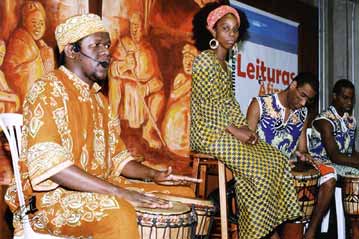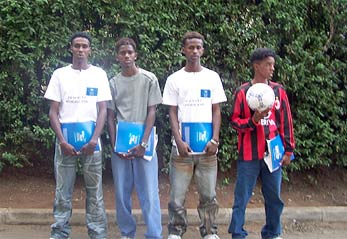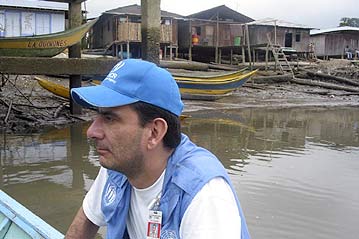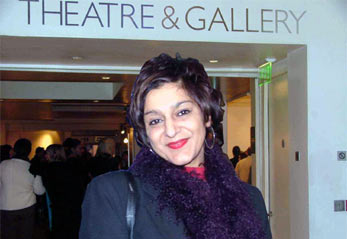Glimpses of a refugee ghetto
Glimpses of a refugee ghetto
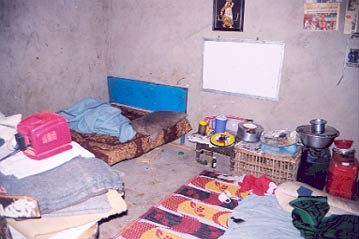
KILO ARBAA WE NUS, Egypt (UNHCR) - They live under the woodwork, out of sight and mind for most denizens of bustling Cairo. They do the jobs no one wants to do, commuting between the Egyptian capital and their homes in the outskirts every day.
I had long heard about the thousands of Sudanese refugees and asylum seekers who live among the local population in the low-rent area of Kilo Arbaa We Nus, which literally means "4.5 km from the centre of the capital". But nothing prepared me for what I saw.
On the long drive there, I tried to visualise the makeshift refugee settlement I was about to enter - small and shabby houses, people in dire need of assistance - but my thoughts were distracted by the beautiful buildings in Nasr City, an upper-middle-class residential area in Cairo.
Slowly these buildings disappeared and I was suddenly faced with an elevated area covered with red brick buildings. It was hard to think that only a few minutes ago we were driving past Mercedes cars and posh houses.
As our car wended through the tight alleys of Kilo Arbaa We Nus, we saw piles of garbage cramming the streets, but the residents seemed oblivious to their surroundings. I saw a skinny man wearing torn clothes in the dead of winter. Beside him, his barefoot son was a little luckier, dressed in trousers and a jumper that looked way too big for him.
Our first stop was a school, the only one for refugee children in this area. The single-level blue building represents the only education these children can hope for.
Santino, one of the community leaders, took us on a tour of the school, which is funded by the Comboni and Trinitarian religious communities and has 471 students in seven classes. Once the children spotted us, they started running to shake my hand. The young ones were hugging my knees and in no time I was surrounded by scores of refugee children. I've never felt more welcomed in my life. These children were very happy to have a visitor and they really wanted to make me feel at home.

I searched their faces for signs of sorrow but found nothing but smiley faces despite the fact that they often go through the day with a single meal, if you can even call it a meal.
Health care is also a problem. Dr. Julius Batista, who runs the school's clinic, explained that due to the limited abilities of the clinic, some medical cases that require surgery or more sophisticated treatment are referred to a hospital. The school pays for their treatment.
He lamented that he can only help the students, staff and families of the staff. "It pains me to see others in the area who need my help, but I can't do anything about it. I have to follow the school's regulations," he said, adding that he would be willing to volunteer in a general clinic for the neighbourhood.
Indeed, a general health project has been planned for all of Kilo Arbaa We Nus' residents - refugees, asylum seekers and Egyptians alike. During a recent visit to the area, UNHCR Goodwill Ambassador Angelina Jolie donated $20,000 to this project, hoping it will ease the burden of medical expenses for a community that can hardly afford to pay for its basic needs.
I was filled with hope after visiting the school - at least something is being done to give these children an education. But I still wanted to see their homes.
Santino led us down a crooked, bumpy road until we reached a single-level building. As we entered I realised this was not the entrance to a single home but to the homes of 10 families. Behind the gate was a corridor lined with doors on both sides, and behind each door lived a family. An average of five people shared the single room with a single bed. There was no kitchen, no bathroom (there were only two public bathrooms for every 10 rooms) and most of the children had to sleep on the floor.
I spoke to one of the residents, Um Gomaa, a Sudanese refugee with three daughters. Two of the girls go to the school nearby and the youngest hasn't reached school age yet.
Um Gomaa explained that her husband is a daily-rate odd job worker who goes out everyday looking for work. "Sometimes he can't find work and we have to get through the day with no money."
In order to feed her children, Um Gomaa follows the system that most refugees in the area have adopted, buying on credit from the market. "It is very hard for us to pay the 50-pound ($8) rent every month, and if we manage to pay it on time, we no longer have money to eat," she said.
She added unlike many refugee women in Egypt, she cannot work as a domestic help because of her weak health conditions. She cannot travel into town as she gets motion sickness and ends up throwing up violently.
But she is not the only one suffering from health problems. Most of the area's refugee children are suffering from malnourishment. As one of the residents noted, "These children haven't tasted milk in months."
On the way back from the makeshift refugee settlement, I smiled at the thought of the children at school. But when I thought of the living conditions they had to return to every day, the smile faded.
It is hard to think that these families will continue to live like this until someone somehow empathises with their plight and takes action to help them. Refugees did not leave their homes seeking better lives. They left because they had no choice. They had to leave or die. Civil society has to understand that and help ease their burden.
By Amina Alkorey
UNHCR Egypt

